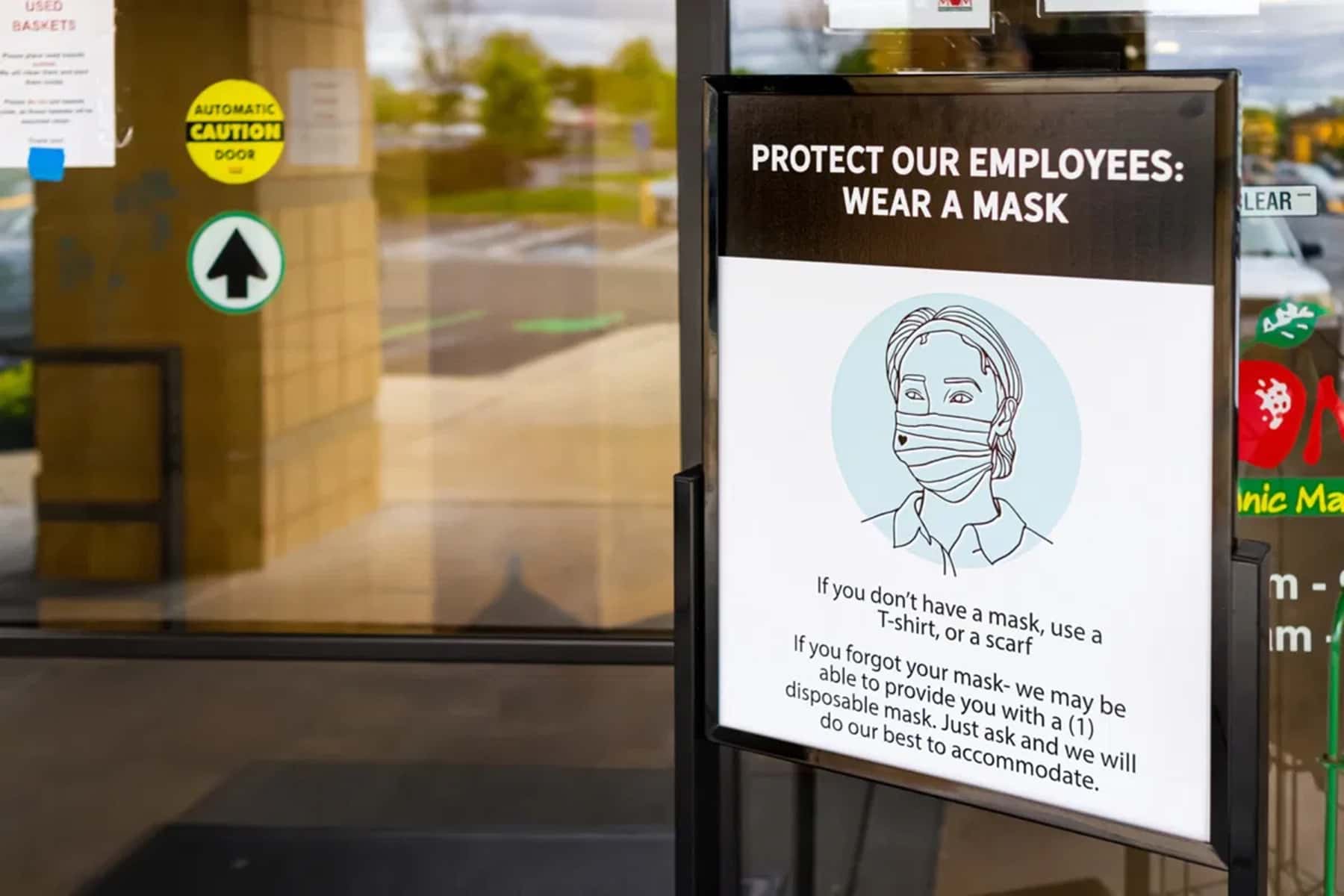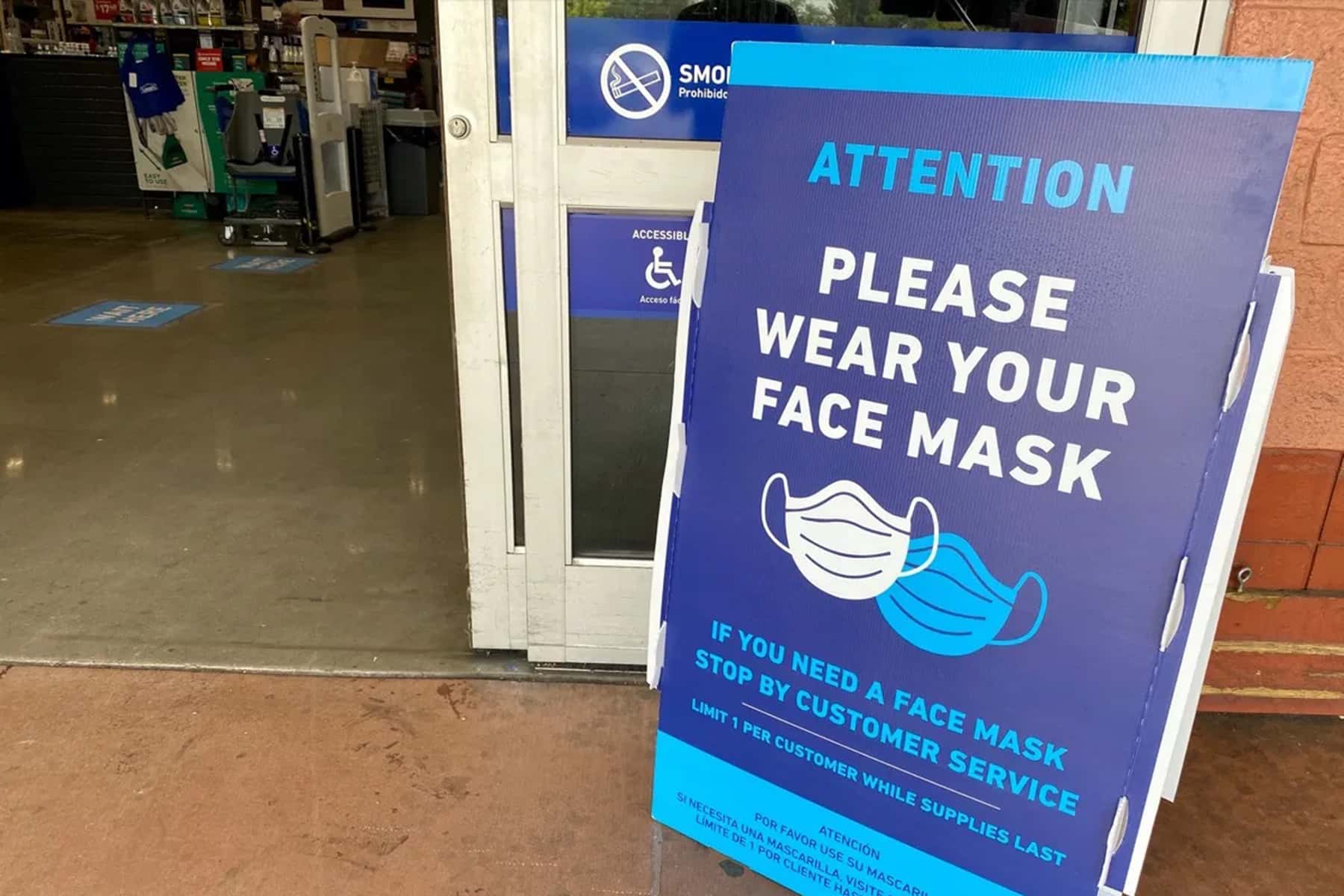
With the only mandatory statewide measure against the coronavirus pandemic now history, a divided state Supreme Court has left battling the virus up to the voluntary choices of each Wisconsin resident — and to the power of local health departments.
The 4-3 ruling on March 31 by the court’s conservative majority ended the most recent state of emergency declaration from Gov. Tony Evers to address the pandemic and blocked him from instituting a new one. With it, the court also ended the most recent statewide mask order.
Coupled with last May’s ruling that canceled state’s shelter-in-place order known as Safer at Home, the court’s action Wednesday appears to leave the administration powerless to act directly to curb the spread of the virus, beyond counseling the public.
“Since the beginning of this pandemic, I’ve worked to keep Wisconsinites healthy and safe, and I’ve trusted the science and public health experts to guide our decision making,” Evers said in a statement following the ruling. “Our fight against COVID-19 isn’t over—while we work to get folks vaccinated as quickly as we can, we know wearing a mask saves lives, and we still need Wisconsinites to mask up so we can beat this virus and bounce back from this pandemic.”
The ruling’s immediate impact is to elevate the importance of public messaging at the state level to voluntarily follow public health safety measures, particularly wearing masks to reduce the spread of the virus. It also leaves local public health authorities as the only agencies with the power to require those measures.
That power faces legal challenges as well, however. And in the longer run, the ruling could also lay the groundwork for much more litigation and conflict between the governor and the state Legislature’s Republican majority over just what government can do to keep the public safe from any health threat — let alone the active coronavirus that has spread virulently around the state, around the country and around the world.
Pandemic gets one emergency
The ruling Wednesday, written by Justice Brian Hagedorn, concluded that when Evers declared a health emergency on July 30, 2020, and with it instituted a statewide mask order, the governor was unlawfully extending his first health emergency order in response to the pandemic, declared March 12, past its original 60-day expiration.
Chapter 323, the state statute that covers the governor’s emergency powers states that such an emergency declaration is limited to 60 days unless extended by the Legislature. That “duration-limiting language forbids the governor from declaring successive states of emergency on the same basis as a prior state of emergency,” the ruling state.
When the state Legislature revoked a later pandemic health emergency order on February 4, Evers immediately declared a new one, Executive Order 105. The ruling states that was unlawful, declaring that “the governor may not reissue a new emergency declaration following legislative revocation of a state of emergency declared on the same basis.”
The majority ruling rejects the position taken by lawyers arguing for the Evers administration — that distinctive circumstances over the course of the pandemic allowed for new states of emergency in their own right.
In her dissent, Justice Ann Walsh Bradley argued the law’s language defined a public health emergency to include “an occurrence” of a public health threat, making the administration’s argument correct. Subsequent health emergency executive orders were based on “not the pandemic itself, but conditions that the pandemic has caused.”
The ruling, the dissent states, “places yet another roadblock to an effective governmental response to COVID-19, further jeopardizing the health and lives of the people of Wisconsin.”
Cases continue to increase
The ruling came as the Evers administration has been celebrating the state’s success in getting vaccines out to the public. This week the Department of Health Services (DHS) announced it had passed a milestone with more than 1 million state residents fully vaccinated. Starting April 5, COVID-19 vaccines will be available to all Wisconsin residents 16 and older — four weeks sooner than the original target date of May 1 for opening up access to the shot.
But it also came as the number of new confirmed cases each day of COVID-19, after declining markedly since before New Year’s Day, has been on the increase once again. As of Wednesday, DHS reported 563 new COVID-19 infections and 10 new deaths. The percentage of tests for the virus each day that are positive has been creeping up as well; by Tuesday, the seven-day average for positive-test rates was 2.8%.
Those numbers concern doctors and health care providers, said Jerry Halverson, a physician and chair of the Wisconsin Medical Society board — and the prospect of more residents going without masks because the mandate has been canceled adds to those worries. Doctors and other health care providers — who largely supported the Evers’ emergency declarations and mask orders — are continuing to urge people to wear masks in public even without a mandate, said Halverson.
“We want to continue to push that people should wear masks, [physically] distance, wash their hands,” he said — and to encourage everyone who is able to get a vaccine. “We are, hopefully, coming down to the final quarter here. For the safety of the state, we don’t want to let up now.”
Public health measures politicized
The legal battle and public contention embroiling the court, the administration and the Republicans in the Legislature over the last year are part of “a political pattern” erupting in several states over measures to combat the virus, according to Alexandra Phelan, a professor of law as well as microbiology and immunology at Georgetown University.
“The powers of government, whether we’re talking about in the executive or the Legislature, to take action to protect public health is one of the most fundamental powers and responsibilities of a government,” said Phelan, who has advised international organizations, governments around the world and the World Health Organization on reforming public health law.
“Complete opposition to public health measures has become politicized in the United States especially,” she said. In the process, language in state laws intended to put a necessary check on the overextension of executive power has itself become overextended. “What we’re seeing in these sorts of cases like Wisconsin’s is good faith safeguards to protect from executive overreach being used to undermine legitimate public health responses.”
The ruling “misses the forest for the trees,” said Ed Fallone of Marquette University Law School. “The statutory interpretation focuses on a very narrow interpretation of specific words, without really paying attention to the overall purpose [of the emergency law], which is a broad delegation of power by the Legislature to the governor to deal with emergencies — which by their nature are unpredictable, unforeseen and need a great deal of flexibility in response.”
The legislative divide
A recurring argument in the months of debate in court and in the Legislature over the repeated health emergencies and mask orders has been Evers’ decision to act on his own, rather than seeking the consent of lawmakers to extend the order.
In his statement on March 31 praising the court’s ruling, Assembly Speaker Robin Vos (R-Rochester) directly referred to that argument: “The Wisconsin Supreme Court confirmed what we already knew. Governor Evers exceeded his authority by issuing multiple emergency orders without consulting the Legislature.”
Marquette University political scientist Philip Rocco said that consulting the Legislature, however, would not have changed anything.
“It’s reasonable to suspect that it will be hard to get the Legislature to go along with a public emergency declaration,” said Rocco, whose research includes examining political polarization around health care. “Some fairly important figures within the state [Republican] party have been downplaying the severity of the pandemic,” he observes — citing Congressman Tom Tiffany, a former state legislator, who was recorded at a rally saying he told his adult children not to get the vaccine.
“So I would be very skeptical that [negotiating with GOP lawmakers] is going to be a viable route to making public health law in this state,” Rocco said.
In a statement responding to the court’s ruling, State Senator Jon Erpenbach (D-West Point) made the same point more pungently.
“There are two things this pandemic has taught us, masks work and Republicans don’t,” stated Erpenbach. “While Governor Evers has worked diligently to protect the health and wellbeing of our communities, Republicans refused to do their job and undermined the Governor’s efforts every step of the way as thousands of Wisconsinites lost their lives to this virus. This Republican-backed lawsuit has shown that Republicans will go to any length in their vendetta against the governor, even if it comes at the cost of human life.”
Vos, in his statement, framed combating public health dangers as a matter of personal choice: “People and businesses are free to make decisions based on what’s best for them and don’t need state government telling them how to live their lives.”
Assembly Minority Leader Gordon Hintz (D-Oshkosh), chalked the ruling up to political gamesmanship, however.
“Politics should have no place in responding to a public health emergency. Yet today’s decision ensures politics will be front-and-center for all future public health emergencies in our state,” Hintz stated. He expressed gratitude for Evers’ actions in managing the pandemic, adding, “But after today’s ruling, I fear Wisconsinites’ health and safety will be at even greater risk in the future.”
The local public health backstop
According to Rocco, the court ruling also leaves unsettled questions, which will likely prompt more litigation to resolve. “What the court is doing is actually arrogating more power to itself,” he said.
In the meantime, with the governor’s power constrained by the ruling, the role of local health departments may become even more important. The decision implies as much in contrasting the emergency law’s 60-day limit on the governor’s orders with a provision that empowers local authorities to pass health emergency ordinances that are limited “to the time during which the emergency conditions exist or are likely to exist.”
“Local health departments are very well positioned to understand public health threats in their communities, and they’re very well positioned to manage those public health threats, in the least restrictive way possible,” said Geoffrey Swain, a retired Milwaukee Health Dept. medical director and the president-elect of the Wisconsin Public Health Association.
Those abilities are bolstered by the current state law, which grants “solid statutory authority” to local health officers, he added.
It is one thing if a public health problem is strictly local, Swain said — but if it was statewide, “it’s much more difficult for local health departments to coordinate with each other.” Without a statewide standard about wearing masks, for example, “you’re going to get a broad patchwork of decisions at the local level.”
At the same time, however, lawsuits and proposed legislation are attempting to erode the authority of local public health departments and health officers “to manage disease outbreaks, including COVID,” said Swain. “This is something that people have to understand — if this responsibility is being delegated from the state to local health departments and local health officers, then it is imperative that local health departments and local health officers retain their statutory authority to manage disease outbreaks.”
The path ahead
There remain unknowns about the impact of Wednesday’s decision. For example, federal emergency SNAP funds that the Department of Agriculture administers are tied to the existence of a state emergency declaration. With the declaration now ended, the state could be at risk for losing its allotment under that program starting in April. In the meantime, however, the Evers administration and the state will be navigating new pandemic territory.
“The burden now has to be shared across the leadership of the state,” said Georgetown University’s Alexandra Phelan, with everyone from local community leaders, faith leaders, celebrities and other prominent people to model the need for mask wearing and other public health behaviors.
Marquette Law’s Ed Fallone said he would advise the governor to work closely with the federal administration of President Joe Biden for “a more active federal response, because these limits on the governor’s authority are just too time-consuming and too disruptive.”
Swain, of the public health association, said the public needs to take seriously what is required to get the virus fully under control.
“People in Wisconsin need to understand where we are in this pandemic,” he said. “It’s like we’ve been in a football game and we’ve had a very long drive — we started on our one-yard line and we’re all the way down the field — we’re like at the 10-yard line and we’ve got a first and goal.”
Or maybe, he added, with the recent uptick in cases, “we fumbled the ball and we’re now back on the 15 or 20.”
Not enough people are vaccinated yet — well short of the 80% needed for herd immunity, he said. “There’s still a lot of virus out there. We need everybody in Wisconsin to keep up the good work for another couple of months” — diligently washing hands, maintaining physical distance and wearing masks.
“This is not the time for us to spike the ball and celebrate,” said Swain. “We’re not in the endzone yet.”
Erik Gunn
Originally published on the Wisconsin Examiner as Voluntary compliance is all that’s left after high court ruling
Donate: Wisconsin Examiner
Help spread Wisconsin news, relentless reporting, unheard voices, and untold stories. Make a difference with a tax-deductible contribution to the Wisconsin Examiner















